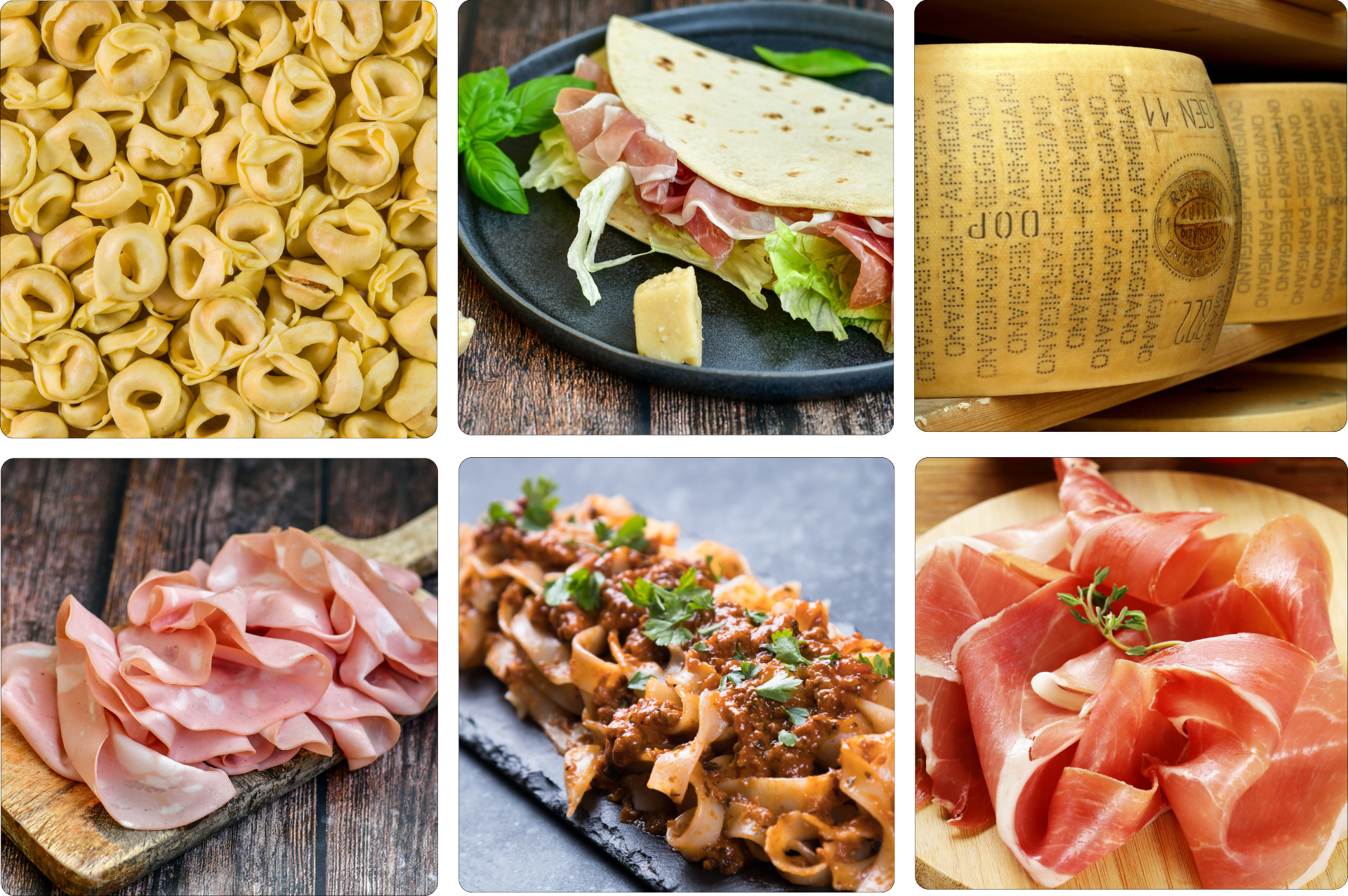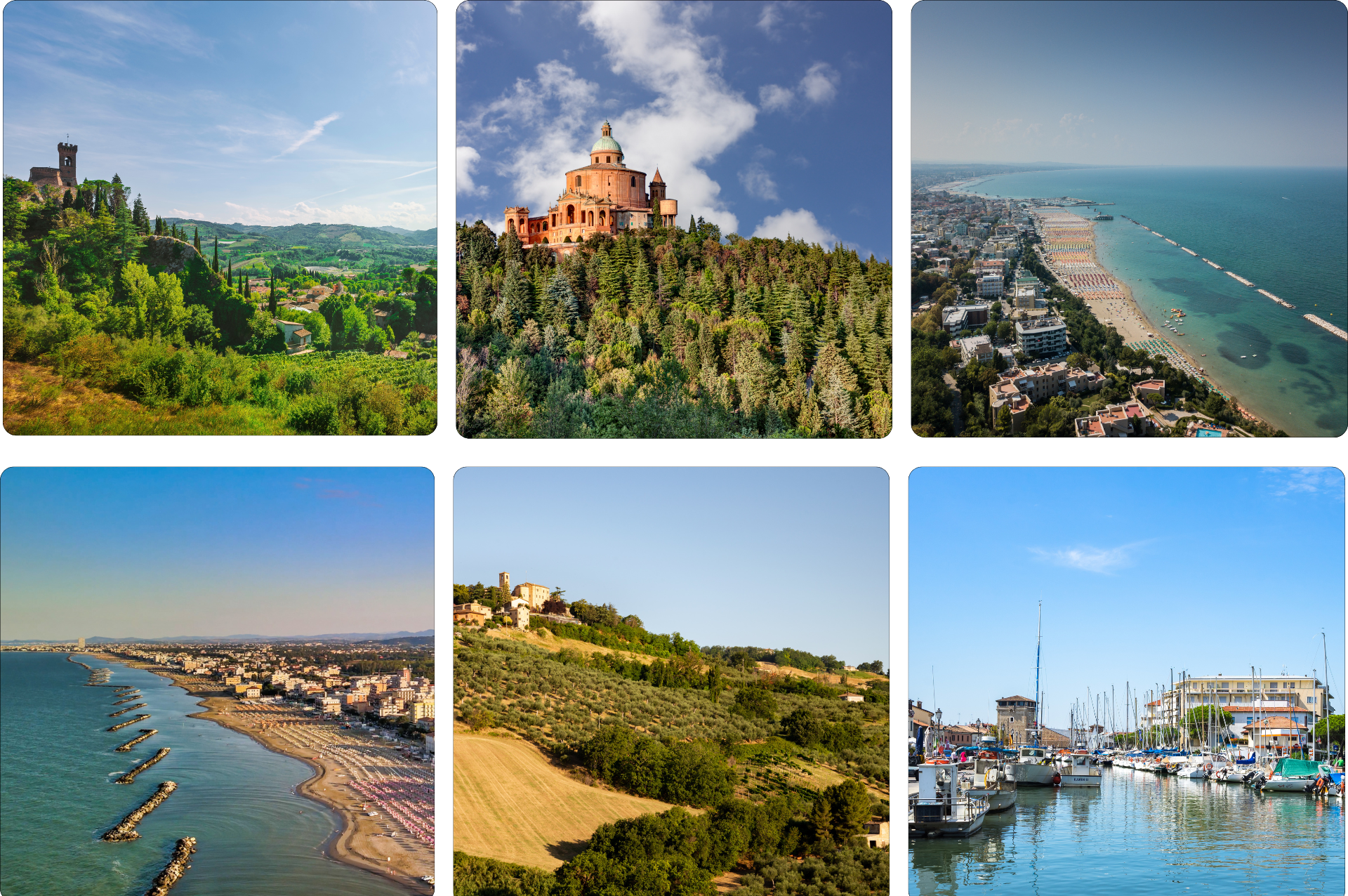Emilia Romagna

The roots of history: from antiquity to the Risorgimento
The history of Emilia Romagna is a mix of cultures and populations that have left an indelible mark on the fabric of the region. Celts, Etruscans, and Umbrians were among the first to settle, followed by Roman conquests and barbarian invasions. The medieval period saw the rise of powerful duchies and struggle between the Guelphs and Ghibellines, culminating in unification under the Kingdom of Italy in 1861. The University of Bologna, founded in 1088, symbolizes the region's importance as a center of knowledge and culture. 
Hidden treasures: monuments and museums
Emilia Romagna preserves an artistic and cultural heritage of inestimable value, with monuments and museums that narrate centuries of history and creativity. From the medieval towers of Bologna to the strongholds of Imola, from the Byzantine treasures of Ravenna to the Romanesque masterpieces of Modena and Parma, the region offers an unforgettable journey through art and architecture. Museums such as the MAMbo in Bologna and the Ferrari Museum in Maranello celebrate modernity and innovation, while ancient libraries and anatomical theaters reveal Emilia Romagna's deep connection to culture and science. 

A journey through flavours: Emilia-Romagna cuisine
The cuisine of Emilia Romagna is a celebration of abundance and variety, the result of centuries of autonomy of Emilian cities and the influence of the Papal State in Romagna. Culinary diversity is reflected in two distinct gastronomic schools: the opulent Emilian cuisine, famous for Parmigiano Reggiano, egg pasta and cured meats, and the traditional Romagna cuisine, with its iconic piadina. This gastronomic richness is the result of a history of ducal courts and cultural influences that have been able to enhance local products. 
Events and traditions: the Emilia-Romagna calendar
Emilia Romagna is the scene of a rich calendar of folklore events and popular festivals that keep local traditions alive. From the Nott de Bisò in Faenza to the Segavecchia Festival in Forlimpopoli, from historical Carnivals to medieval re-enactments, the region celebrates its cultural roots with joy and participation. These events are an opportunity to discover the authenticity and warmth of the local community, in a riot of colours, flavors and music that unites past and present.
Population and geography: a diversified territory
With around 4.4 million inhabitants and a surface area of 22,450 km², Emilia Romagna is distinguished by a varied geography that ranges from the Apennine mountains to the Adriatic coasts. The region is divided into nine provinces, each with its own peculiarities and natural beauties, from imposing mountains such as Monte Cimone to vital rivers such as the Po and the Reno, witnesses of a landscape that has always played a crucial role in the development and identity of the region. 
